ZAMBIA
ZAMBIA
ZAMBIA
The real Africa!
The real Africa!
The real Africa!
The home of the mighty Zambezi River for which it is named, Zambia offers some of the most authentic and exciting safari experiences in Africa with incredible wildlife action, inspiringly beautiful landscapes, diverse and colourful cultures, warmly welcoming people and adrenalin-filled adventures...
With a collection of phenomenal national parks offering outstanding game viewing and a wide range of accommodation options from intimate, authentic bush camps to contemporary luxury lodges, Zambia is one of Southern Africa's leading safari destinations.
Each national park has something unique to offer, from the annual straw coloured fruit bat migration of Kasanka, the wildebeest and zebra migration of Liuwa Plain and the shoebills of Bangweulu to the huge concentrations of hippo in the South Luangwa, the sitatunga and roan of Kafue and the endless elephants of the Lower Zambezi.
The home of the mighty Zambezi River for which it is named, Zambia offers some of the most authentic and exciting safari experiences in Africa with incredible wildlife action, inspiringly beautiful landscapes, diverse and colourful cultures, warmly welcoming people and adrenalin-filled adventures...
With a collection of phenomenal national parks offering outstanding game viewing and a wide range of accommodation options from intimate, authentic bush camps to contemporary luxury lodges, Zambia is one of Southern Africa's leading safari destinations.
Each national park has something unique to offer, from the annual straw coloured fruit bat migration of Kasanka, the wildebeest and zebra migration of Liuwa Plain and the shoebills of Bangweulu to the huge concentrations of hippo in the South Luangwa, the sitatunga and roan of Kafue and the endless elephants of the Lower Zambezi.
The home of the mighty Zambezi River for which it is named, Zambia offers some of the most authentic and exciting safari experiences in Africa with incredible wildlife action, inspiringly beautiful landscapes, diverse and colourful cultures, warmly welcoming people and adrenalin-filled adventures...
With a collection of phenomenal national parks offering outstanding game viewing and a wide range of accommodation options from intimate, authentic bush camps to contemporary luxury lodges, Zambia is one of Southern Africa's leading safari destinations.
Each national park has something unique to offer, from the annual straw coloured fruit bat migration of Kasanka, the wildebeest and zebra migration of Liuwa Plain and the shoebills of Bangweulu to the huge concentrations of hippo in the South Luangwa, the sitatunga and roan of Kafue and the endless elephants of the Lower Zambezi.



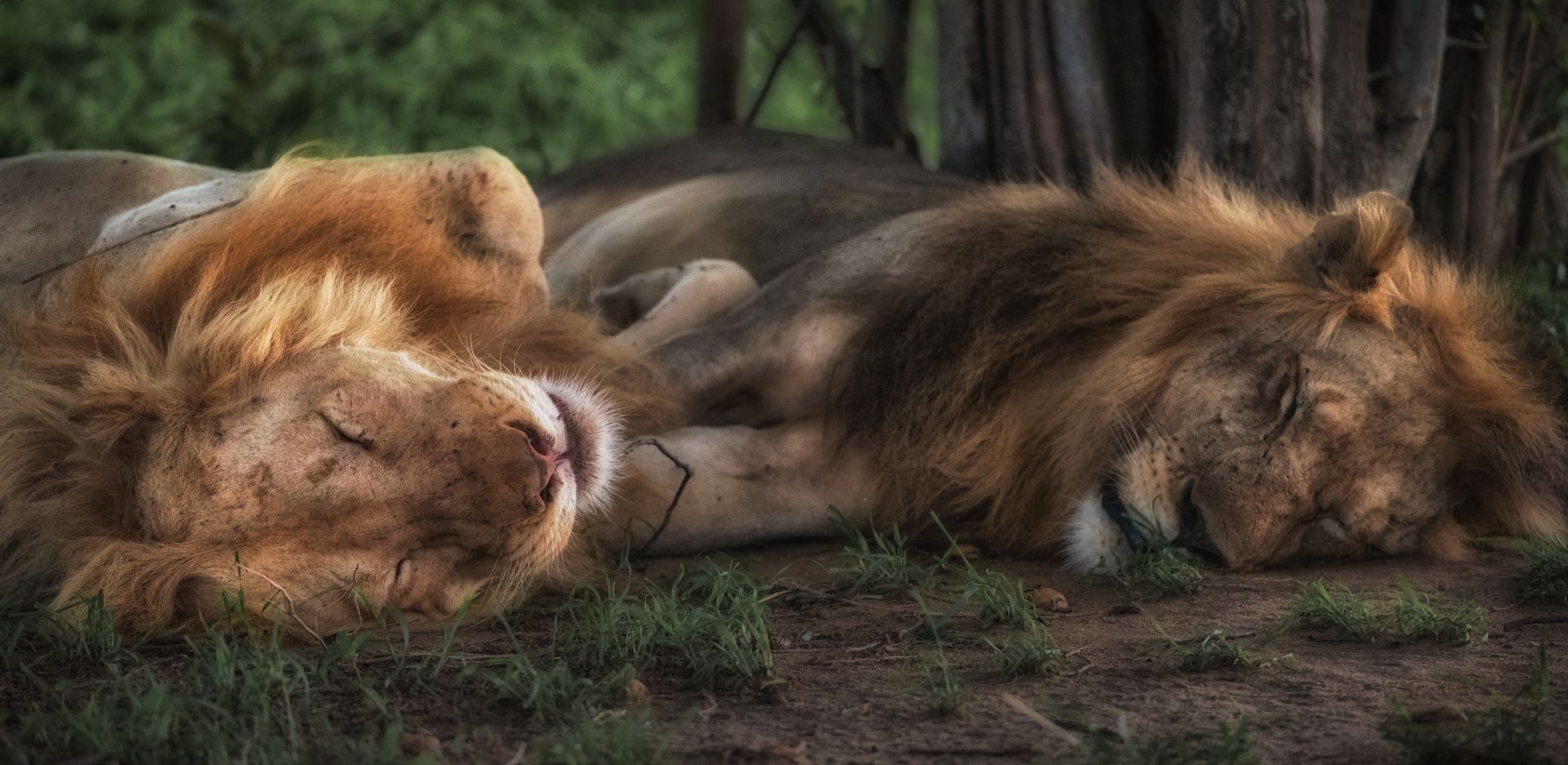
Slide title
Write your caption hereButton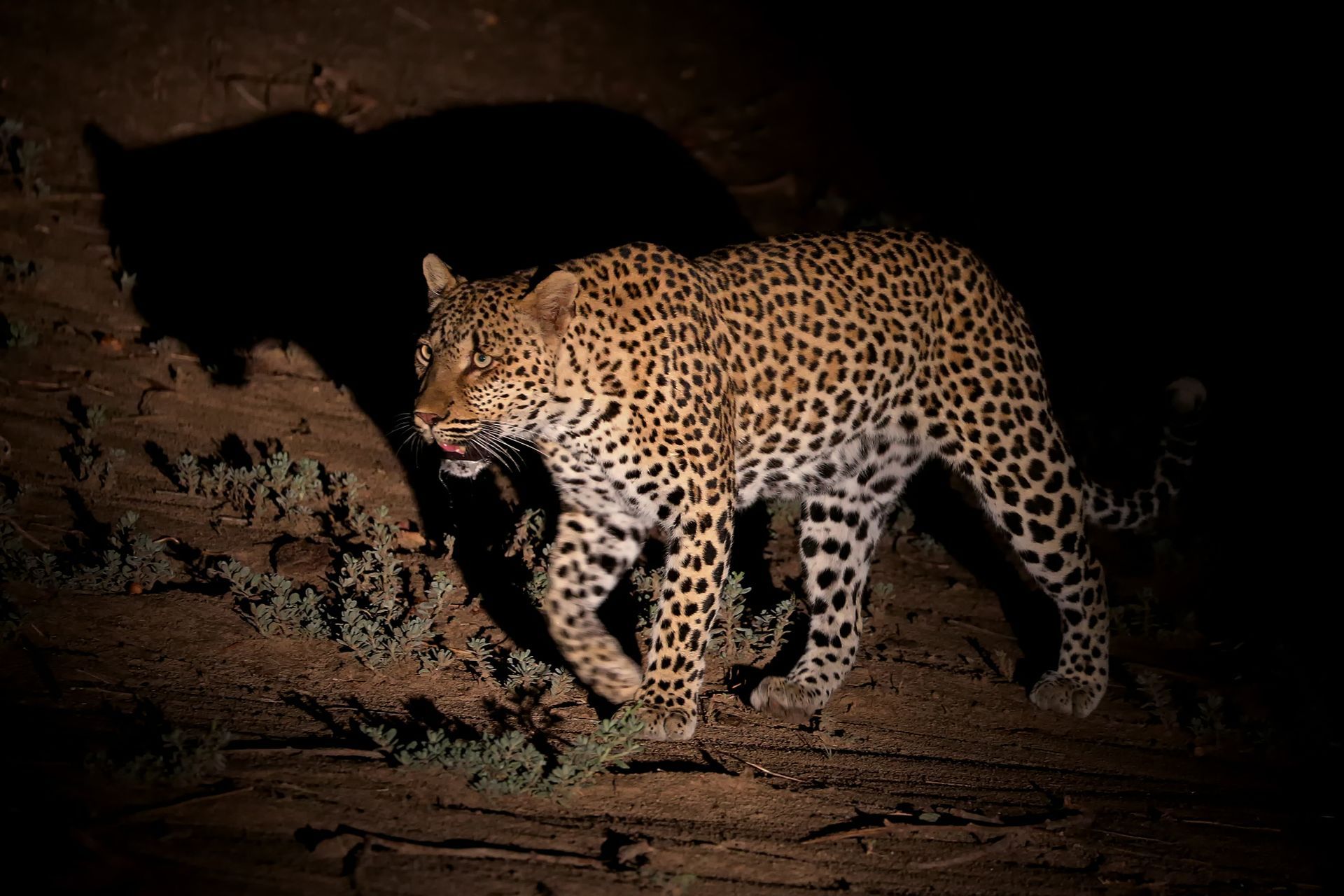
Slide title
Write your caption hereButton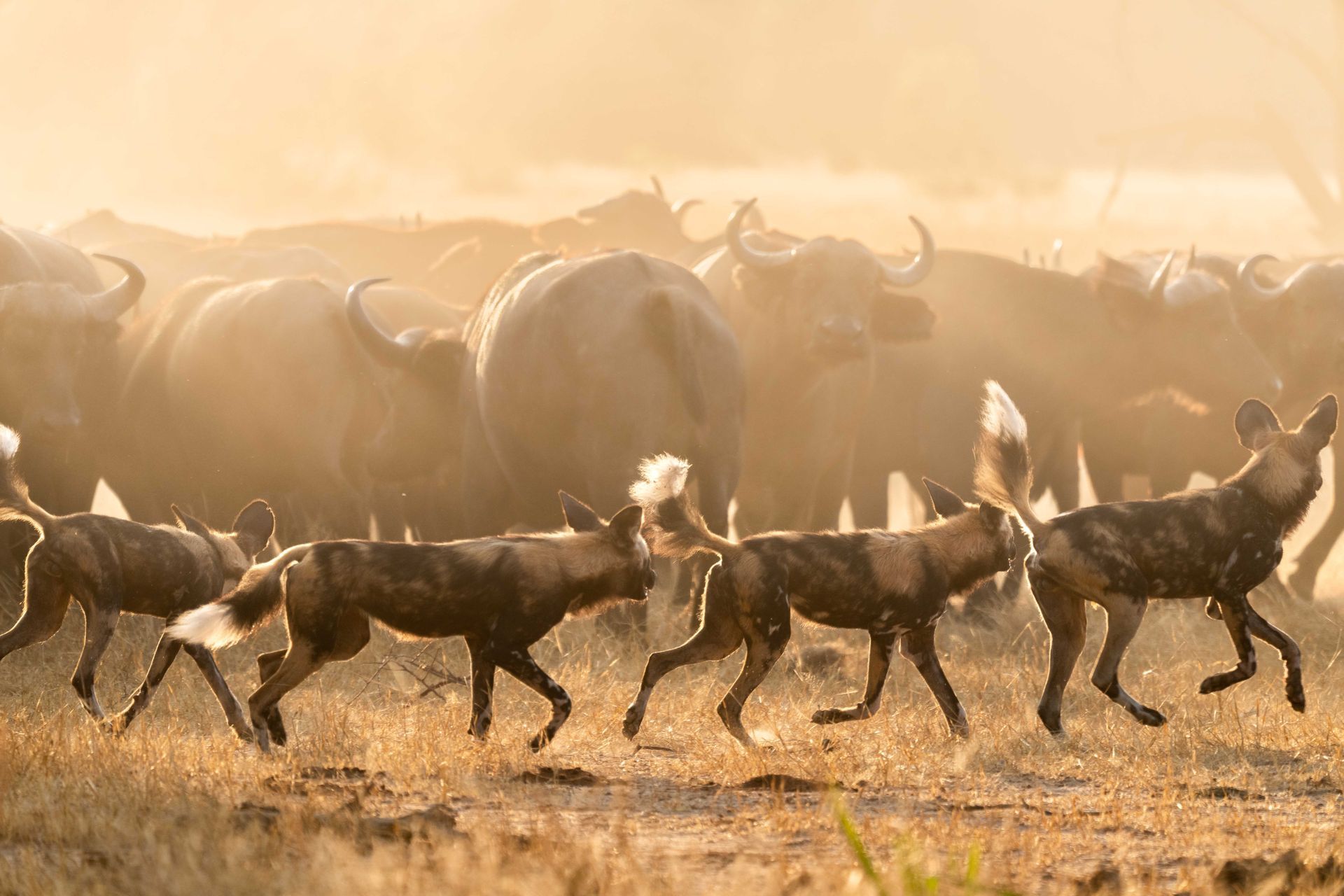
Slide title
Write your caption hereButton
About Zambia
Zambia's capital city of Lusaka is a bustling, vibrant tourism hub providing access to the safari circuit via its international airport from where you can get connecting flights to the major tourism destinations such as the Lower Zambezi and South Luangwa National Parks. It's a rapidly modernising city with world-class shopping malls, restaurants and world-renowned hotel chains.
The town of Livingstone on the edge of the Victoria Falls is also a major border crossing to neighbouring Zimbabwe and has a modern international airport with connections to South Africa and Kenya. This is Zambia's adventure capital with a host of activities for adrenalin lovers from micro-lighting, gorge-swinging and bungee jumping to swimming in the jaw-dropping Devil's Pool on the edge of the Victoria Falls' main cataract.
Don't miss out on visiting this amazing country!
Here are some of the top destinations in Zambia...

Slide title
Write your caption hereButton
Slide title
Write your caption hereButton
Slide title
Write your caption hereButton
About Zambia
Zambia's capital city of Lusaka is a bustling, vibrant tourism hub providing access to the safari circuit via its international airport from where you can get connecting flights to the major tourism destinations such as the Lower Zambezi and South Luangwa National Parks. It's a rapidly modernising city with world-class shopping malls, restaurants and world-renowned hotel chains.
The town of Livingstone on the edge of the Victoria Falls is also a major border crossing to neighbouring Zimbabwe and has a modern international airport with connections to South Africa and Kenya. This is Zambia's adventure capital with a host of activities for adrenalin lovers from micro-lighting, gorge-swinging and bungee jumping to swimming in the jaw-dropping Devil's Pool on the edge of the Victoria Falls' main cataract.
Don't miss out on visiting this amazing country!
Here are some of the top destinations in Zambia...

Slide title
Write your caption hereButton
Slide title
Write your caption hereButton
Slide title
Write your caption hereButton
About Zambia
Zambia's capital city of Lusaka is a bustling, vibrant tourism hub providing access to the safari circuit via its international airport from where you can get connecting flights to the major tourism destinations such as the Lower Zambezi and South Luangwa National Parks. It's a rapidly modernising city with world-class shopping malls, restaurants and world-renowned hotel chains.
The town of Livingstone on the edge of the Victoria Falls is also a major border crossing to neighbouring Zimbabwe and has a modern international airport with connections to South Africa and Kenya. This is Zambia's adventure capital with a host of activities for adrenalin lovers from micro-lighting, gorge-swinging and bungee jumping to swimming in the jaw-dropping Devil's Pool on the edge of the Victoria Falls' main cataract.
Don't miss out on visiting this amazing country!
Here are some of the top destinations in Zambia...
LOWER ZAMBEZI VALLEY & LOWER ZAMBEZI NATIONAL PARK
Located between Kariba Dam and Mozambique's Cahora Bassa Dam, the Lower Zambezi valley sees the spectacular Zambezi River take a slow meander through vast floodplains dominated by impressive mountains. The river is wide and lazy, dotted with islands and sandbanks, and forms a natural border between Zambia and neighbouring Zimbabwe. Its banks are fringed with groves of enormous albida, mahogany and fig trees and life is found in adbundance wherever you look.
Safari activities are concentrated in the Lower Zambezi National park and its western game management area where a good selection of wonderful lodges and camps can be found, all taking advantage of the fantastic game viewing and birding, as well as offering distinctly different activities like fishing (catch and release), river cruises, canoeing and fly-camping.
The safari season in the Lower Zambezi traditionally starts in April each year, running to mid-to-end November, when the annual rains usually begin, making access to the park and camps difficult to impossible! Game viewing is good all year round, but at its best in the dry season when the wildlife concentrates around the river. This is when you see huge herds of elephants crossing the river regularly and feeding on the various islands.
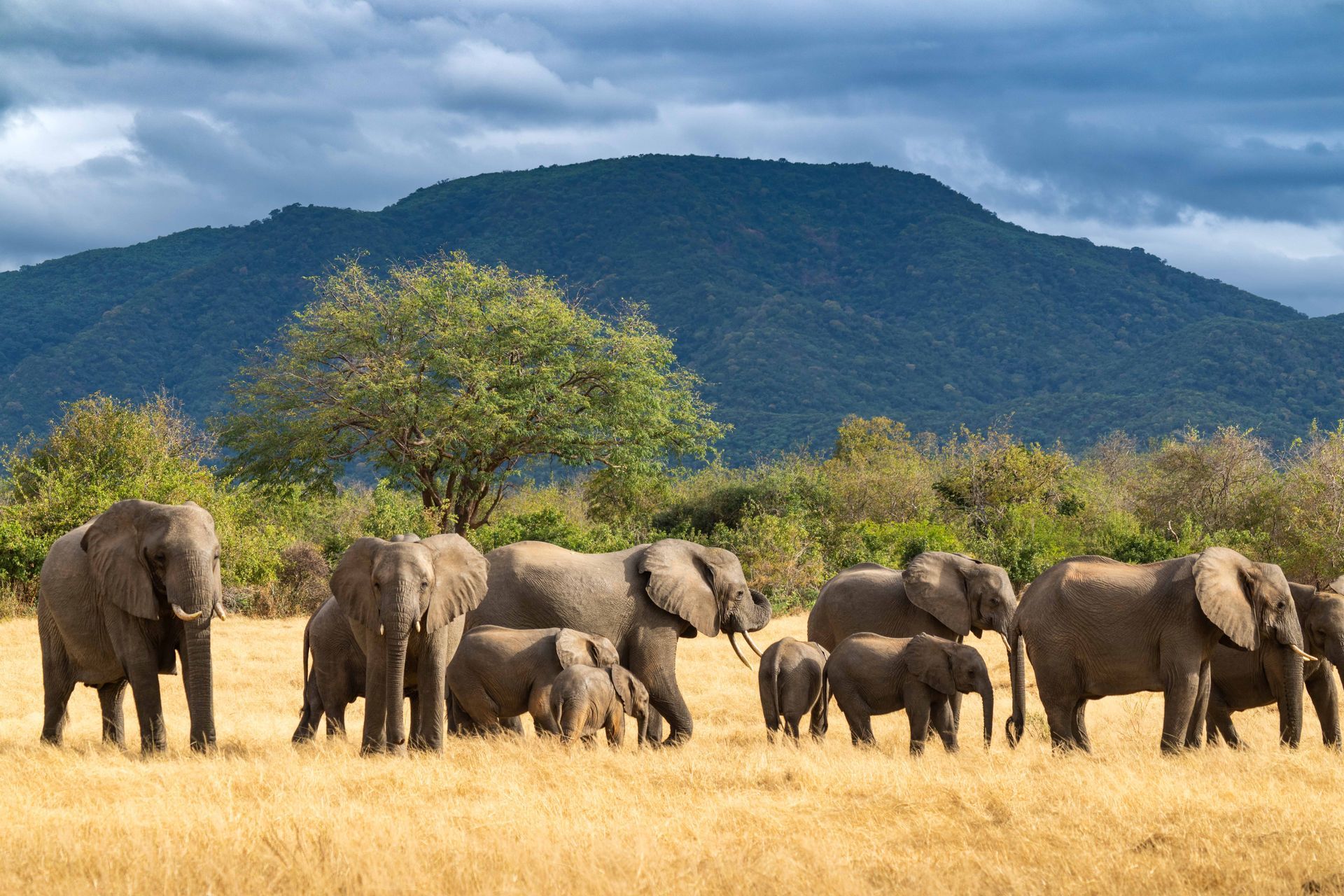
Slide title
Write your caption hereButton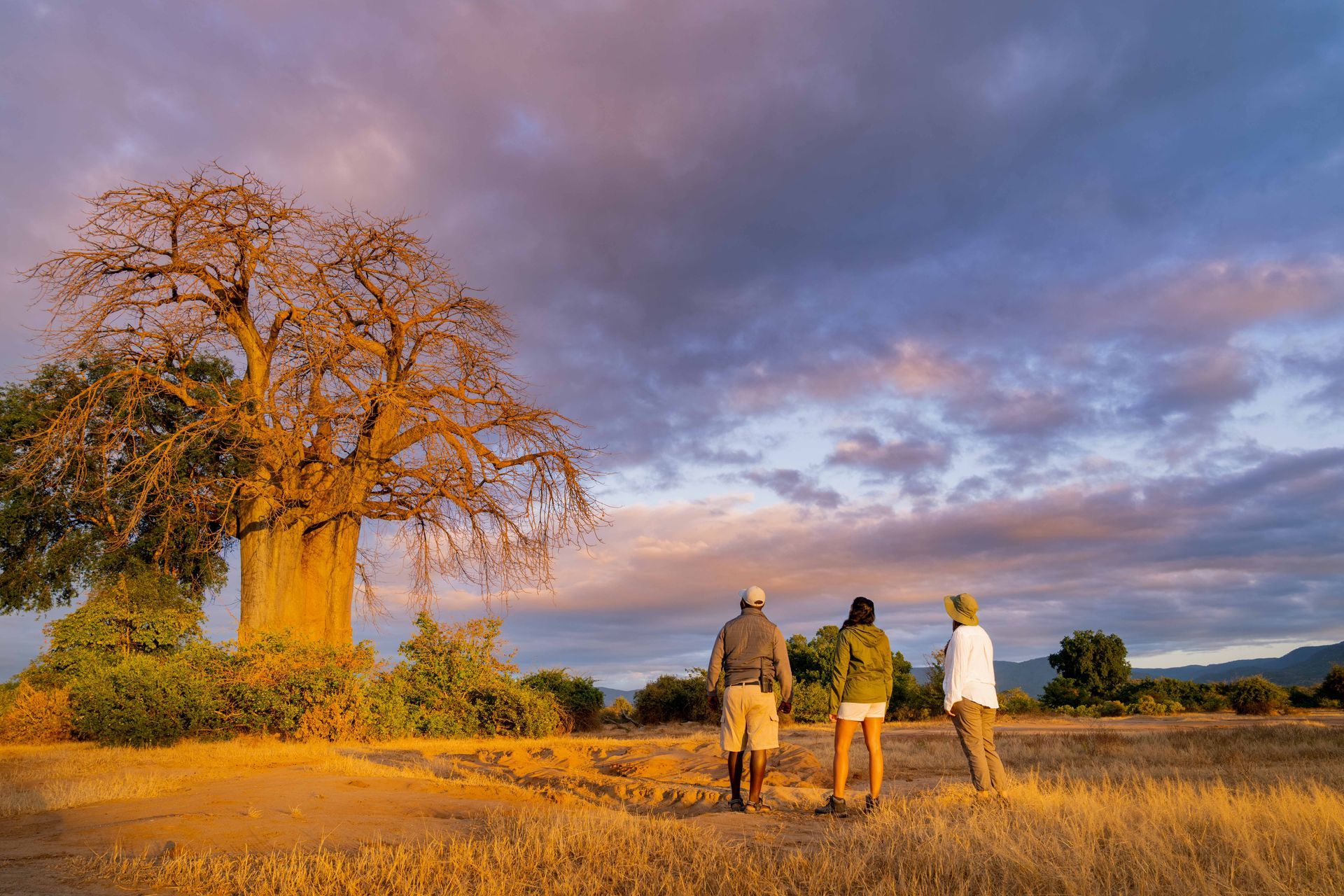
Slide title
Write your caption hereButton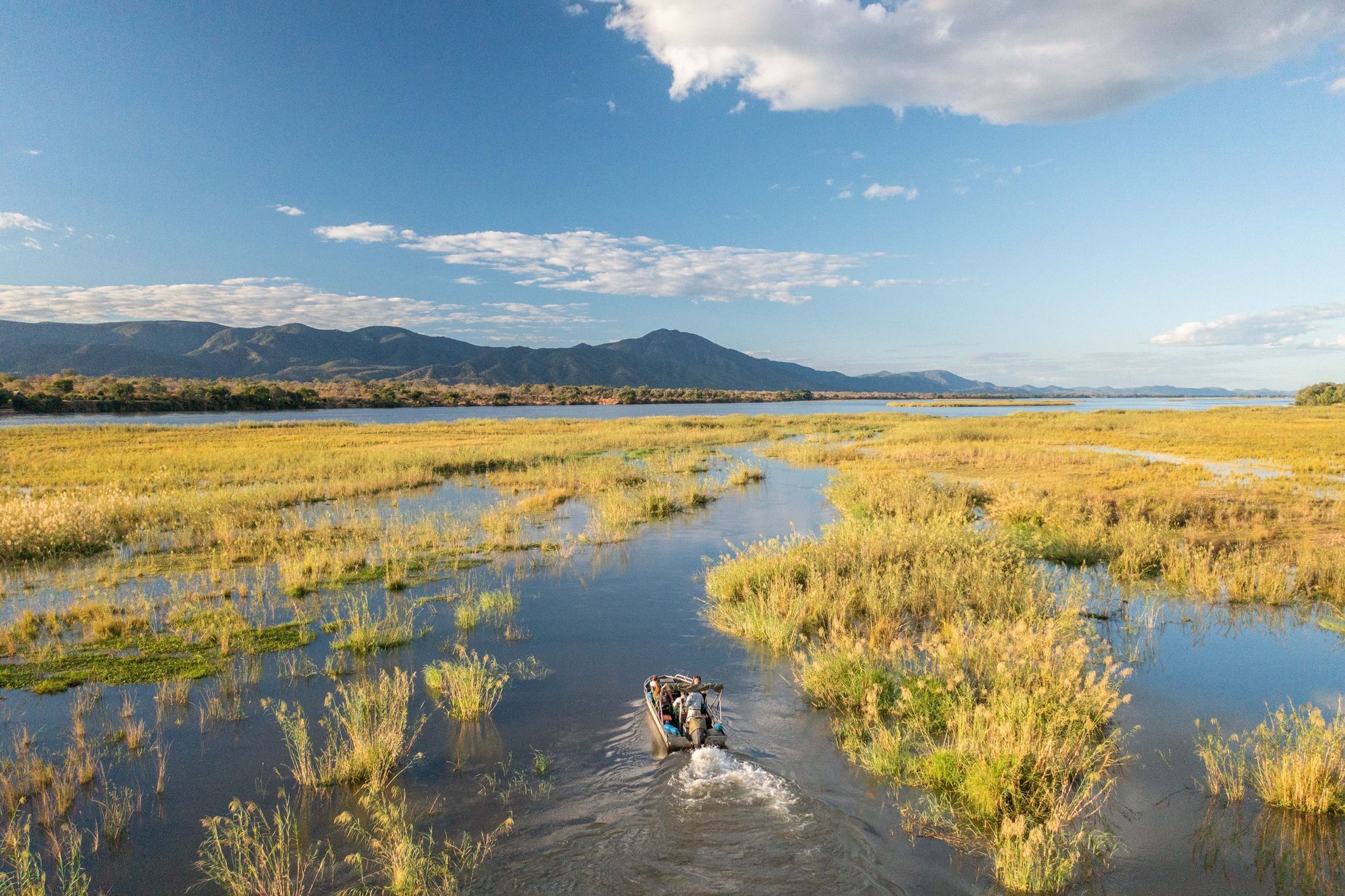
Slide title
Write your caption hereButton
LOWER ZAMBEZI VALLEY & LOWER ZAMBEZI NATIONAL PARK
Located between Kariba Dam and Mozambique's Cahora Bassa Dam, the Lower Zambezi valley sees the spectacular Zambezi River take a slow meander through vast floodplains dominated by impressive mountains. The river is wide and lazy, dotted with islands and sandbanks, and forms a natural border between Zambia and neighbouring Zimbabwe. Its banks are fringed with groves of enormous albida, mahogany and fig trees and life is found in adbundance wherever you look.
Safari activities are concentrated in the Lower Zambezi National park and its western game management area where a good selection of wonderful lodges and camps can be found, all taking advantage of the fantastic game viewing and birding, as well as offering distinctly different activities like fishing (catch and release), river cruises, canoeing and fly-camping.
The safari season in the Lower Zambezi traditionally starts in April each year, running to mid-to-end November, when the annual rains usually begin, making access to the park and camps difficult to impossible! Game viewing is good all year round, but at its best in the dry season when the wildlife concentrates around the river. This is when you see huge herds of elephants crossing the river regularly and feeding on the various islands.
LOWER ZAMBEZI VALLEY & LOWER ZAMBEZI NATIONAL PARK
Located between Kariba Dam and Mozambique's Cahora Bassa Dam, the Lower Zambezi valley sees the spectacular Zambezi River take a slow meander through vast floodplains dominated by impressive mountains. The river is wide and lazy, dotted with islands and sandbanks, and forms a natural border between Zambia and neighbouring Zimbabwe. Its banks are fringed with groves of enormous albida, mahogany and fig trees and life is found in adbundance wherever you look.
Safari activities are concentrated in the Lower Zambezi National park and its western game management area where a good selection of wonderful lodges and camps can be found, all taking advantage of the fantastic game viewing and birding, as well as offering distinctly different activities like fishing (catch and release), river cruises, canoeing and fly-camping.
The safari season in the Lower Zambezi traditionally starts in April each year, running to mid-to-end November, when the annual rains usually begin, making access to the park and camps difficult to impossible! Game viewing is good all year round, but at its best in the dry season when the wildlife concentrates around the river. This is when you see huge herds of elephants crossing the river regularly and feeding on the various islands.



SOUTH LUANGWA NATIONAL PARK
The home of the walking safari which originated here, the South Luangwa valley and South Luangwa National Park are Zambia's most popular safari destinations thanks to the incredible concentration of wildlife found here. The diversity of game species is matched by an array of wonderful, luxury bush camps and lodges.
The park itself is around 9,000 sq km in size, with its western and northwestern borders bounded by the Muchinga Escarpment, and the southern border lined with the meandering Luangwa River - a major tributary of the Zambezi. In the dry season the seasonal river dries up to a series of pools, concentrating the park's huge hippo population into a relatively small and rapidly depleting area of water.
The changing seasons add to the South Luangwa’s richness, ranging from; dry, bare bushveld in the winter, to a lush, green wonderland in the summer months. There are 60 different animal species, including the rare Thornicroft's giraffe, and approximately 400 of Zambia’s 732 species of birds can be seen here, including 39 birds of prey and 47 migrant species, making it a Mecca for birders.
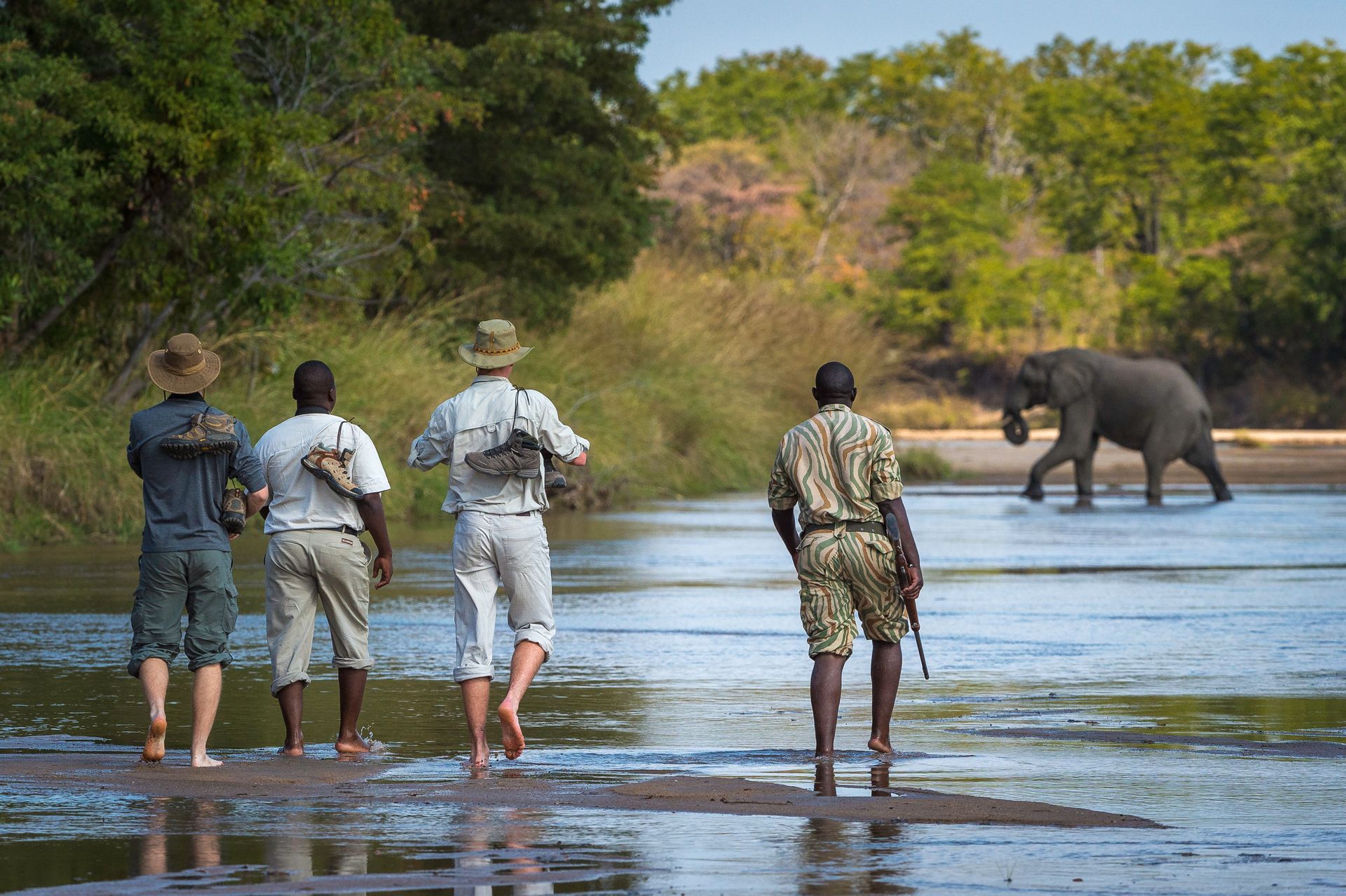
Slide title
Write your caption hereButton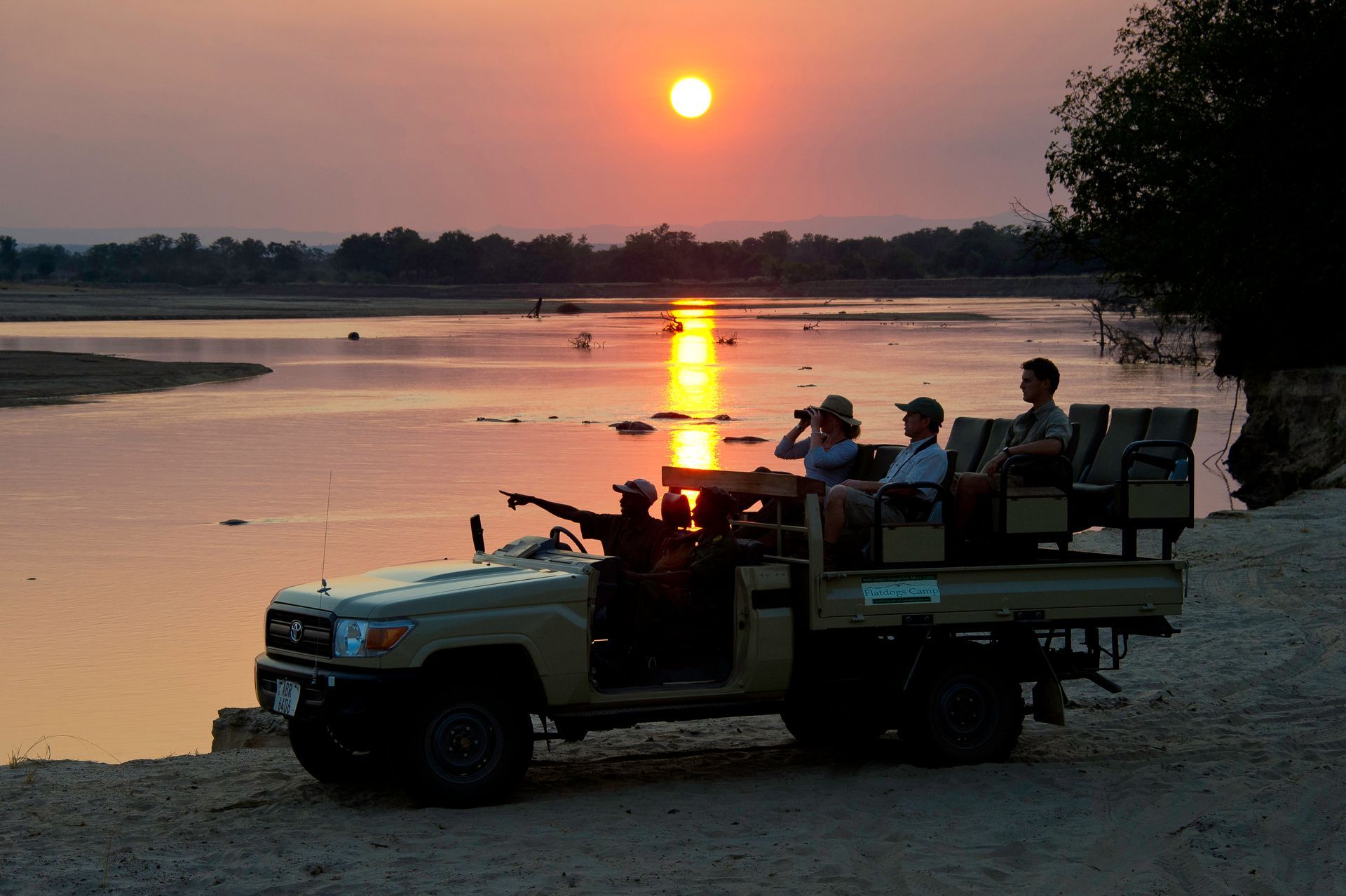
Slide title
Write your caption hereButton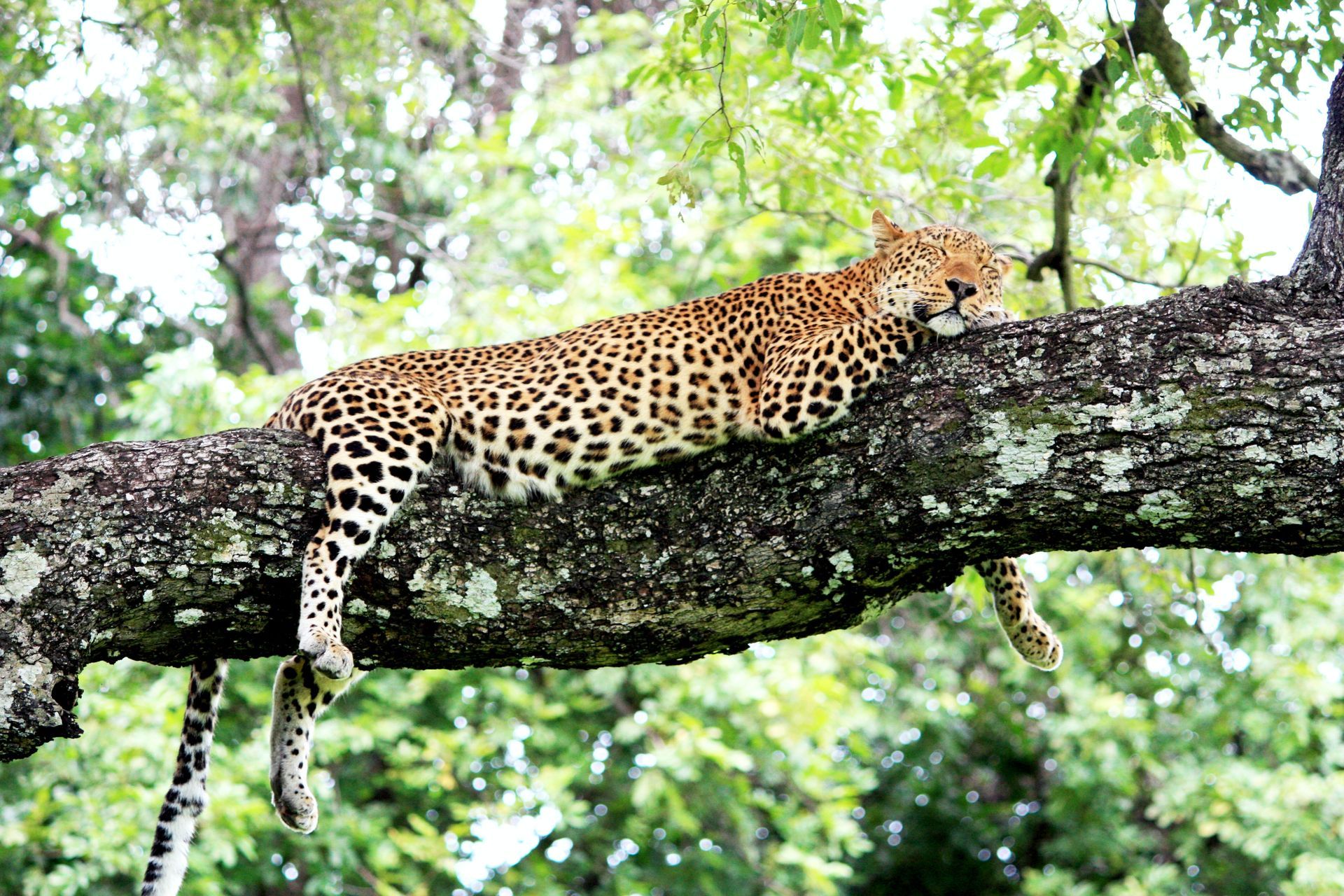
Slide title
Write your caption hereButton
SOUTH LUANGWA NATIONAL PARK
The home of the walking safari which originated here, the South Luangwa valley and South Luangwa National Park are Zambia's most popular safari destinations thanks to the incredible concentration of wildlife found here. The diversity of game species is matched by an array of wonderful, luxury bush camps and lodges.
The park itself is around 9,000 sq km in size, with its western and northwestern borders bounded by the Muchinga Escarpment, and the southern border lined with the meandering Luangwa River - a major tributary of the Zambezi. In the dry season the seasonal river dries up to a series of pools, concentrating the park's huge hippo population into a relatively small and rapidly depleting area of water.
The changing seasons add to the South Luangwa’s richness, ranging from; dry, bare bushveld in the winter, to a lush, green wonderland in the summer months. There are 60 different animal species, including the rare Thornicroft's giraffe, and approximately 400 of Zambia’s 732 species of birds can be seen here, including 39 birds of prey and 47 migrant species, making it a Mecca for birders.
SOUTH LUANGWA NATIONAL PARK
The home of the walking safari which originated here, the South Luangwa valley and South Luangwa National Park are Zambia's most popular safari destinations thanks to the incredible concentration of wildlife found here. The diversity of game species is matched by an array of wonderful, luxury bush camps and lodges.
The park itself is around 9,000 sq km in size, with its western and northwestern borders bounded by the Muchinga Escarpment, and the southern border lined with the meandering Luangwa River - a major tributary of the Zambezi. In the dry season the seasonal river dries up to a series of pools, concentrating the park's huge hippo population into a relatively small and rapidly depleting area of water.
The changing seasons add to the South Luangwa’s richness, ranging from; dry, bare bushveld in the winter, to a lush, green wonderland in the summer months. There are 60 different animal species, including the rare Thornicroft's giraffe, and approximately 400 of Zambia’s 732 species of birds can be seen here, including 39 birds of prey and 47 migrant species, making it a Mecca for birders.



LIVINGSTONE & THE VICTORIA FALLS
Named for Victorian missionary and explorer Dr David Livingstone, the first European to be shown the Zambezi River and its incredible falls, the town of Livingstone is one of Zambia's busiest and most popular tourism destinations. Dr Livingstone named the falls after his queen, but the Victoria Falls are still known by their local name - Mosi Oa Tunya, meaning "the smoke that thunders". The town has literally grown up around them and is a busy border with neighbouring Zimbabwe, thanks to the iconic and historic railway bridge that crosses the Batoka gorge.
This is Zambia's adventure capital where excitement is guaranteed. Most of the activities revolve around the falls and include one of the most unique (and terrifying) experiences in Africa - the chance to swim in a small pool on the very lip of the falls' mighty main cataract. Called Devil's Pool, it is protected from the main current of the river by a submerged rocky buttress and is only accessible in the dry season when the river is at its lowest.
Other adenalin-fuelled adventures are microlighting over the falls, a swing over the Batoka gorge, white water rafting, mountain biking tours and helicopter flips. Visits to Mkuni village with its wealth of history and culture are also recommended.
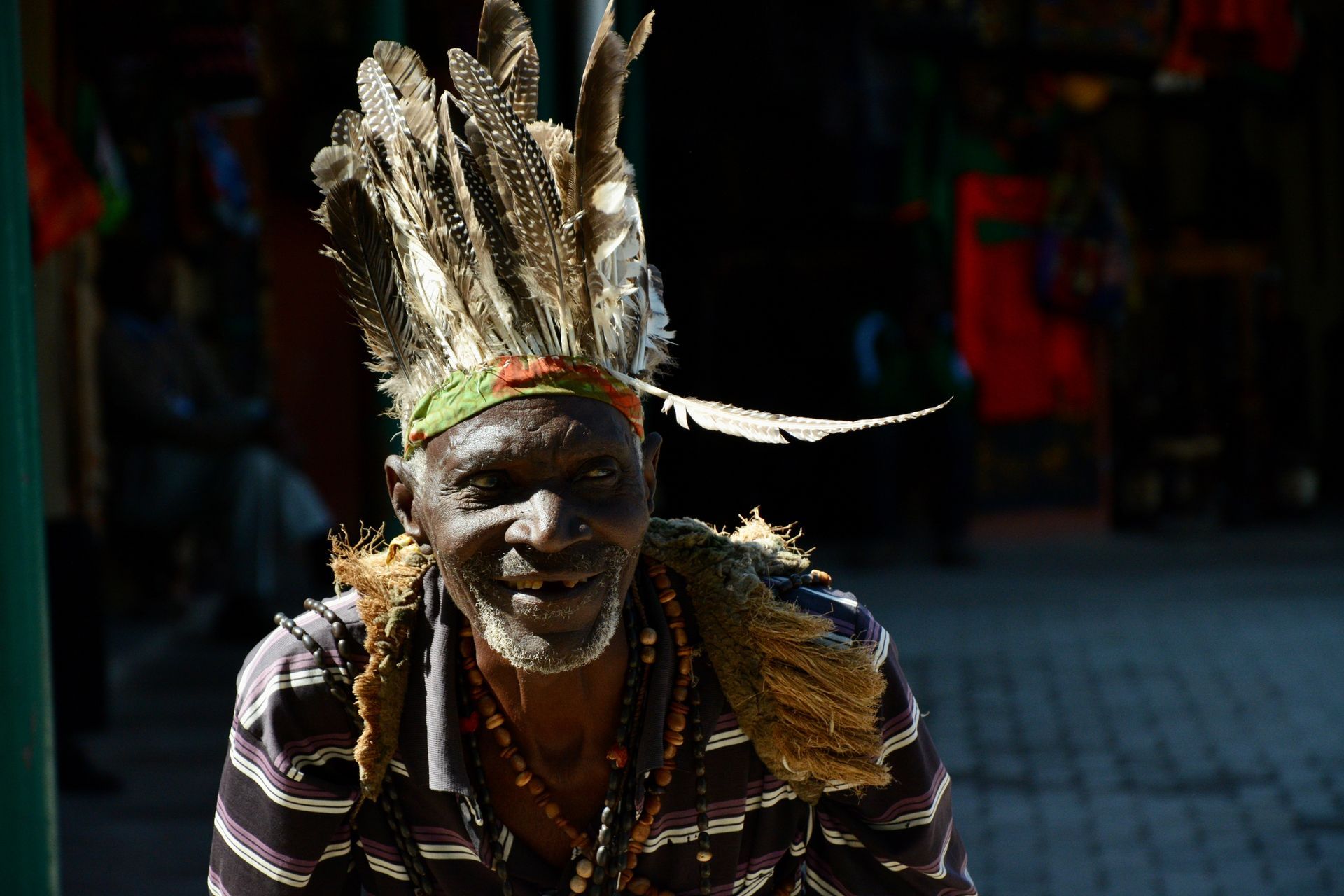
Slide title
Write your caption hereButton
Slide title
Write your caption hereButton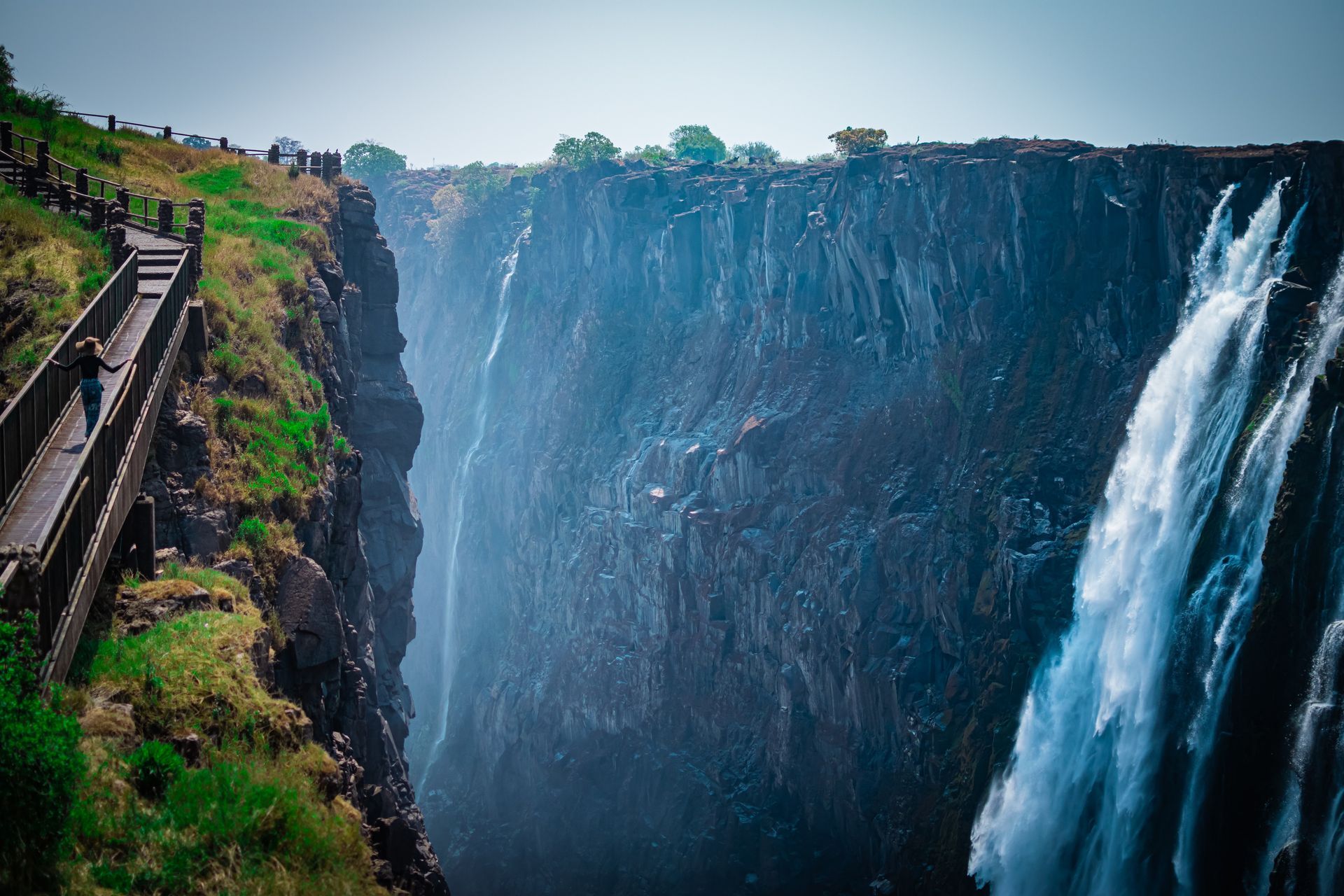
Slide title
Write your caption hereButton
LIVINGSTONE & THE VICTORIA FALLS
Named for Victorian missionary and explorer Dr David Livingstone, the first European to be shown the Zambezi River and its incredible falls, the town of Livingstone is one of Zambia's busiest and most popular tourism destinations. Dr Livingstone named the falls after his queen, but the Victoria Falls are still known by their local name - Mosi Oa Tunya, meaning "the smoke that thunders". The town has literally grown up around them and is a busy border with neighbouring Zimbabwe, thanks to the iconic and historic railway bridge that crosses the Batoka gorge.
This is Zambia's adventure capital where excitement is guaranteed. Most of the activities revolve around the falls and include one of the most unique (and terrifying) experiences in Africa - the chance to swim in a small pool on the very lip of the falls' mighty main cataract. Called Devil's Pool, it is protected from the main current of the river by a submerged rocky buttress and is only accessible in the dry season when the river is at its lowest.
Other adenalin-fuelled adventures are microlighting over the falls, a swing over the Batoka gorge, white water rafting, mountain biking tours and helicopter flips. Visits to Mkuni village with its wealth of history and culture are also recommended.
LIVINGSTONE & THE VICTORIA FALLS
Named for Victorian missionary and explorer Dr David Livingstone, the first European to be shown the Zambezi River and its incredible falls, the town of Livingstone is one of Zambia's busiest and most popular tourism destinations. Dr Livingstone named the falls after his queen, but the Victoria Falls are still known by their local name - Mosi Oa Tunya, meaning "the smoke that thunders". The town has literally grown up around them and is a busy border with neighbouring Zimbabwe, thanks to the iconic and historic railway bridge that crosses the Batoka gorge.
This is Zambia's adventure capital where excitement is guaranteed. Most of the activities revolve around the falls and include one of the most unique (and terrifying) experiences in Africa - the chance to swim in a small pool on the very lip of the falls' mighty main cataract. Called Devil's Pool, it is protected from the main current of the river by a submerged rocky buttress and is only accessible in the dry season when the river is at its lowest.
Other adenalin-fuelled adventures are microlighting over the falls, a swing over the Batoka gorge, white water rafting, mountain biking tours and helicopter flips. Visits to Mkuni village with its wealth of history and culture are also recommended.



KAFUE NATIONAL PARK
From the sprawling vastness of the Busanga Plains where you find huge herds of buffalo to the verdant riparian forests along the Kafue River and the sparkling waters of Lake Itezhi-Tezhi, the Kafue National Park is one of Africa's last true wilderness areas and offers an incredible opportunity for exploration and complete immersion in raw, untamed nature.
Sprawling across a considerable swathe of southern Zambia, the Kafue is renowned for its hidden gem status and incredible diversity. This 22,400 square kilometre park boasts a variety of landscapes, from mopane woodlands and riverine thickets to papyrus swamps and open grasslands, offering a unique range of safari experiences.
The Kafue is also a paradise for birdwatchers, with more than 500 species calling it home. But the park truly shines for mammal enthusiasts. Expect to spot everything from lions and elephants to cheetahs and endangered painted wolves (African wild dogs), as well as red lechwe, puku, roan antelope and sable.
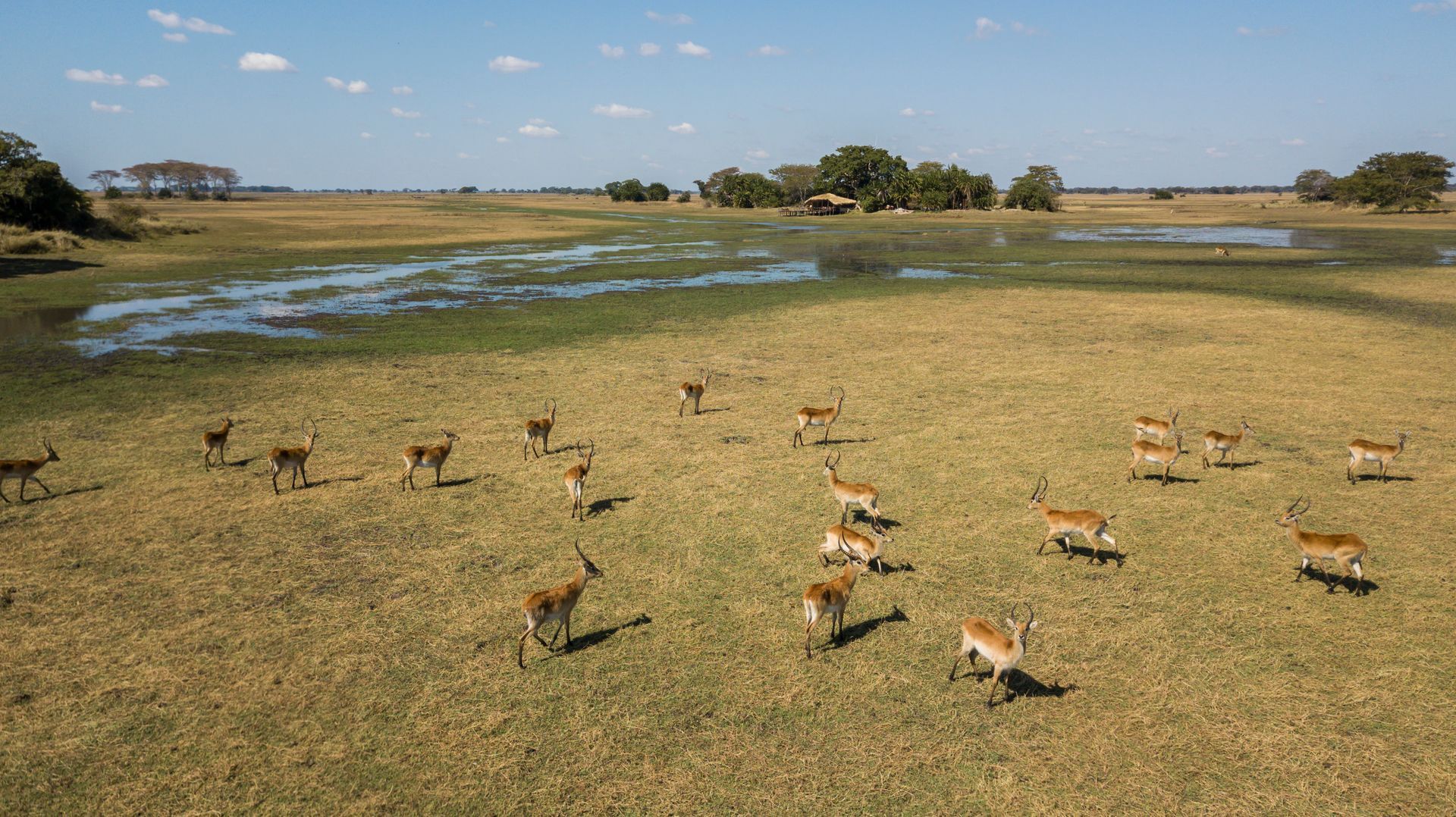
Slide title
Write your caption hereButton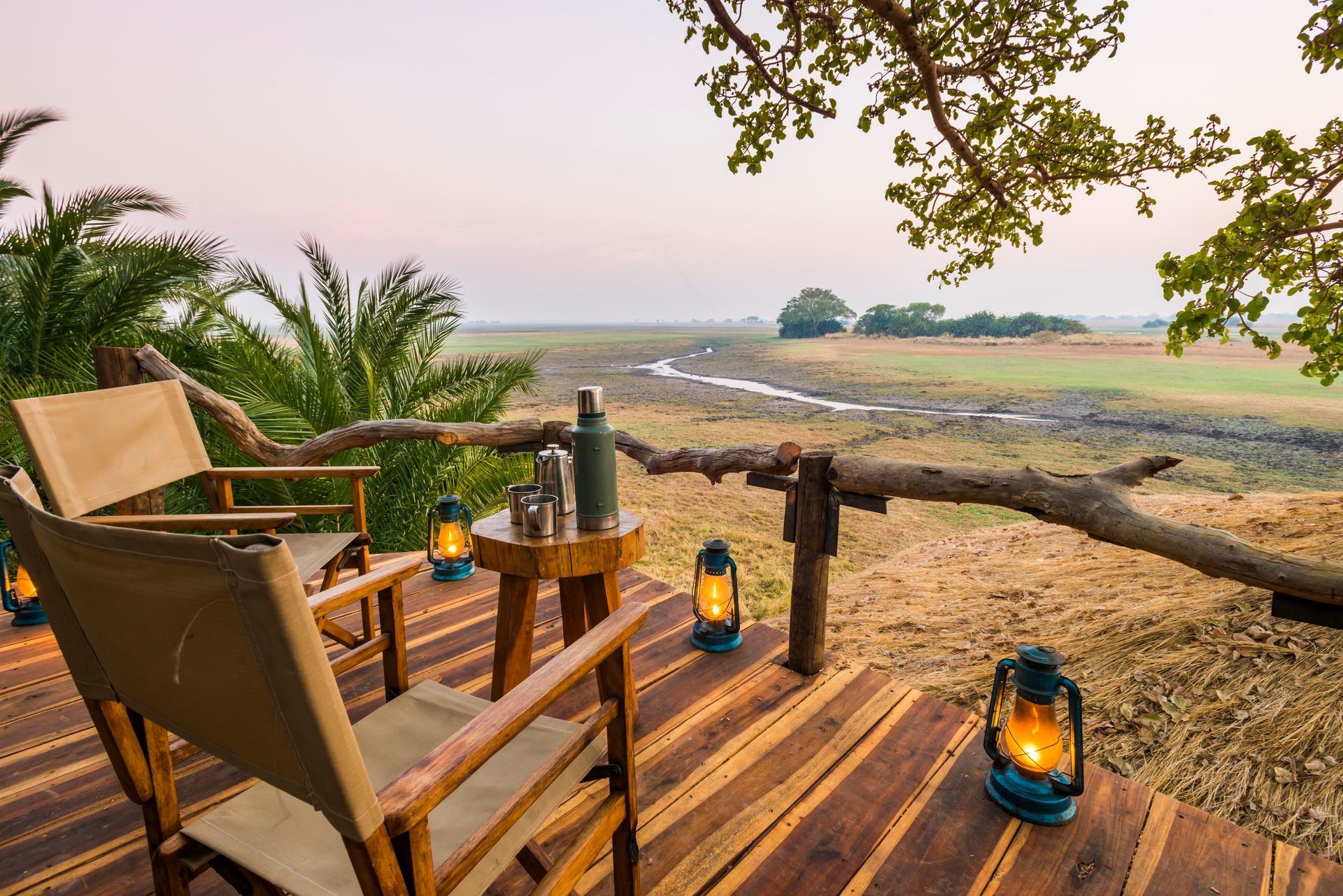
Slide title
Write your caption hereButton
Slide title
Write your caption hereButton
KAFUE NATIONAL PARK
From the sprawling vastness of the Busanga Plains where you find huge herds of buffalo to the verdant riparian forests along the Kafue River and the sparkling waters of Lake Itezhi-Tezhi, the Kafue National Park is one of Africa's last true wilderness areas and offers an incredible opportunity for exploration and complete immersion in raw, untamed nature.
Sprawling across a considerable swathe of southern Zambia, the Kafue is renowned for its hidden gem status and incredible diversity. This 22,400 square kilometre park boasts a variety of landscapes, from mopane woodlands and riverine thickets to papyrus swamps and open grasslands, offering a unique range of safari experiences.
The Kafue is also a paradise for birdwatchers, with more than 500 species calling it home. But the park truly shines for mammal enthusiasts. Expect to spot everything from lions and elephants to cheetahs and endangered painted wolves (African wild dogs), as well as red lechwe, puku, roan antelope and sable.
KAFUE NATIONAL PARK
From the sprawling vastness of the Busanga Plains where you find huge herds of buffalo to the verdant riparian forests along the Kafue River and the sparkling waters of Lake Itezhi-Tezhi, the Kafue National Park is one of Africa's last true wilderness areas and offers an incredible opportunity for exploration and complete immersion in raw, untamed nature.
Sprawling across a considerable swathe of southern Zambia, the Kafue is renowned for its hidden gem status and incredible diversity. This 22,400 square kilometre park boasts a variety of landscapes, from mopane woodlands and riverine thickets to papyrus swamps and open grasslands, offering a unique range of safari experiences.
The Kafue is also a paradise for birdwatchers, with more than 500 species calling it home. But the park truly shines for mammal enthusiasts. Expect to spot everything from lions and elephants to cheetahs and endangered painted wolves (African wild dogs), as well as red lechwe, puku, roan antelope and sable.



LIUWA PLAIN NATIONAL PARK
Tucked away in Zambia's western reaches, Liuwa Plain National Park is a hidden gem waiting to be explored.
A haven for wildlife and a champion of conservation success stories, Liuwa was once depleted of large mammals due to hunting but has made a remarkable comeback, becoming a sanctuary for iconic species like lion, cheetah and painted wolves (African wild dogs).
This vast, grassy plain is now teeming with wildlife, offering visitors an off-the-beaten-path safari experience. It's also a birding heaven, thanks to the plains flooding each year when the Zambezi breaks its banks.
Beyond wildlife encounters, Liuwa's charm lies in its remoteness. Accommodation options are limited, adding to the park's exclusive feel.
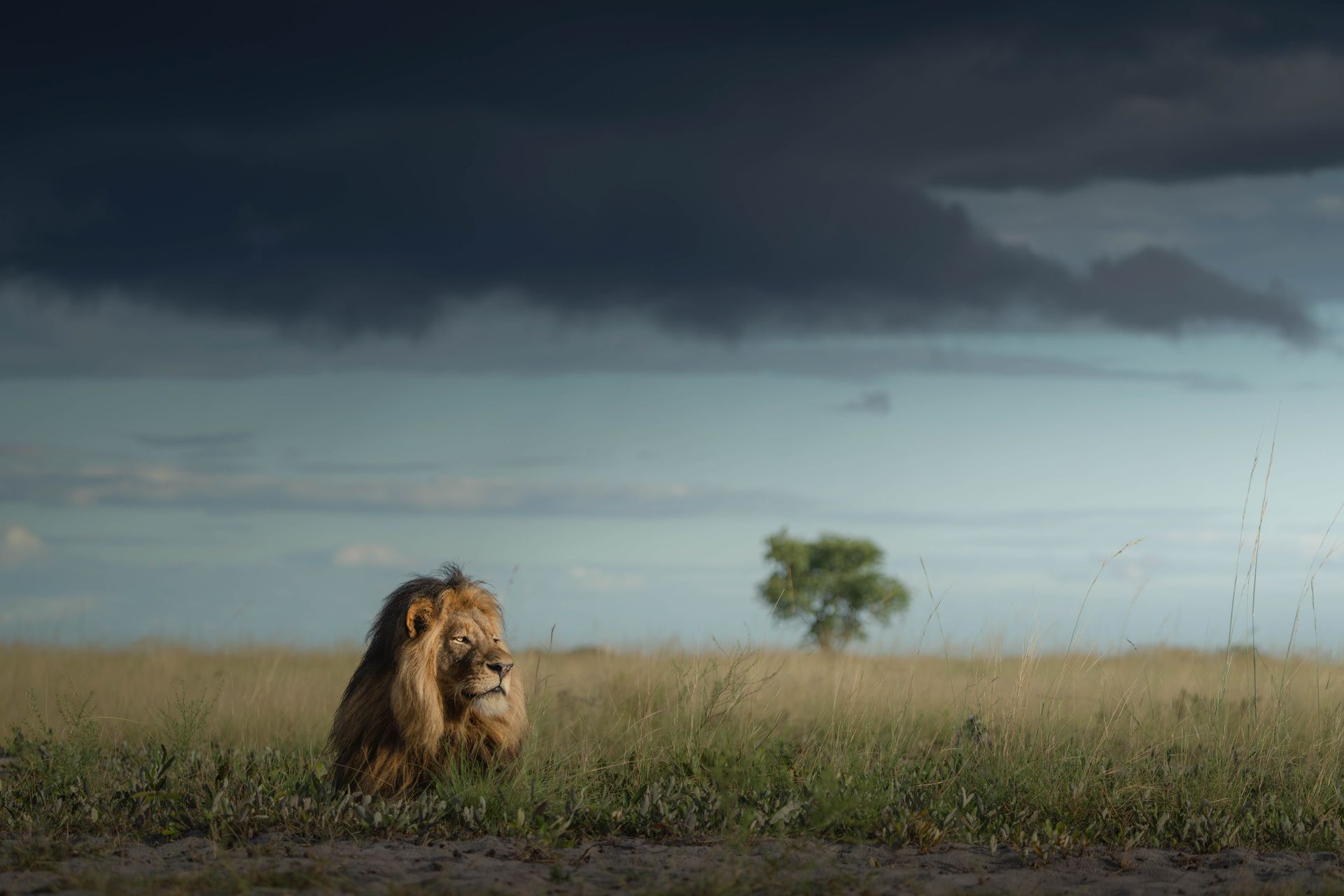
Slide title
Write your caption hereButton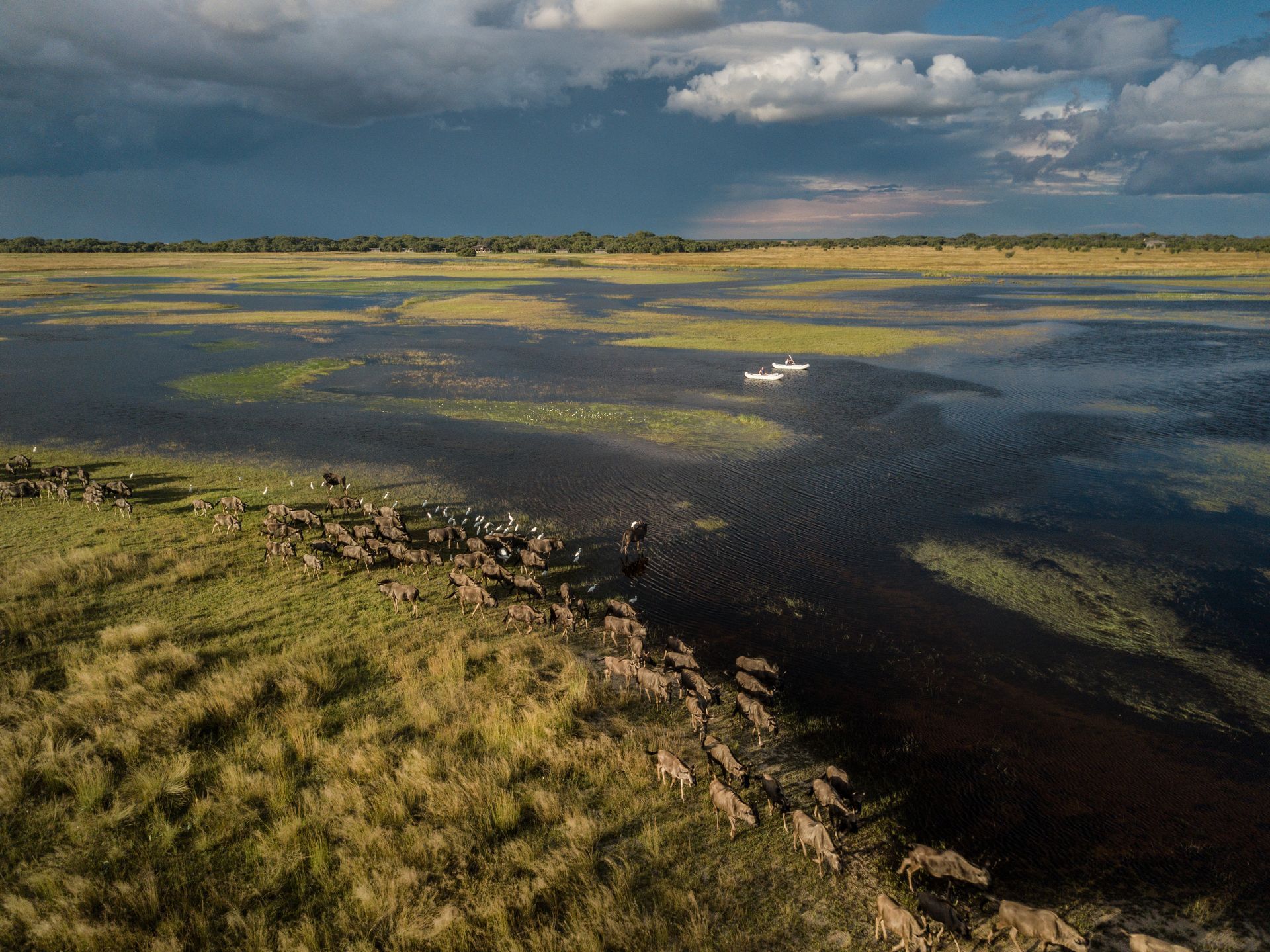
Slide title
Write your caption hereButton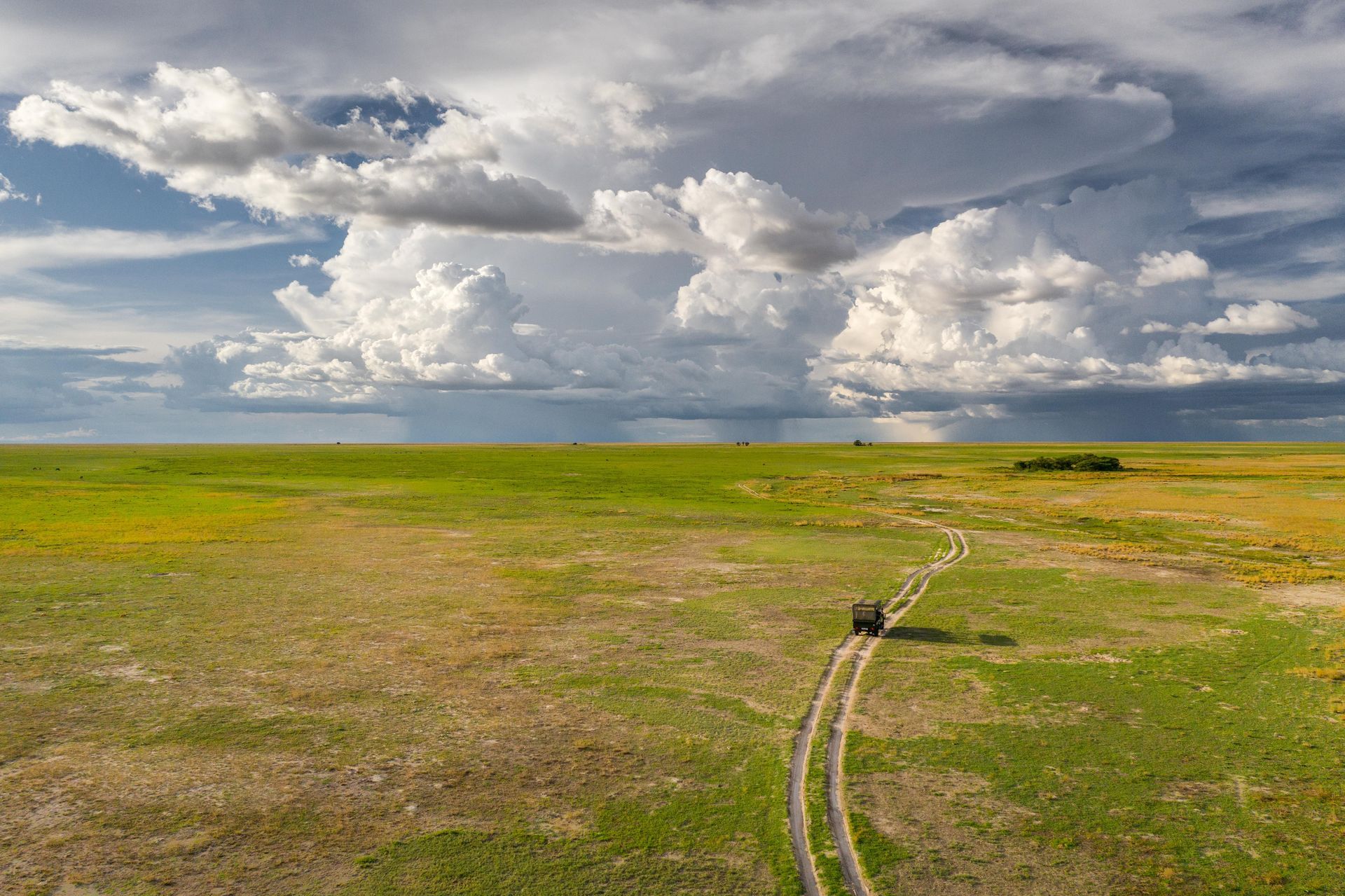
Slide title
Write your caption hereButton
LIUWA PLAIN NATIONAL PARK
Tucked away in Zambia's western reaches, Liuwa Plain National Park is a hidden gem waiting to be explored.
A haven for wildlife and a champion of conservation success stories, Liuwa was once depleted of large mammals due to hunting but has made a remarkable comeback, becoming a sanctuary for iconic species like lion, cheetah and painted wolves (African wild dogs).
This vast, grassy plain is now teeming with wildlife, offering visitors an off-the-beaten-path safari experience. It's also a birding heaven, thanks to the plains flooding each year when the Zambezi breaks its banks.
Beyond wildlife encounters, Liuwa's charm lies in its remoteness. Accommodation options are limited, adding to the park's exclusive feel.
LIUWA PLAIN NATIONAL PARK
Tucked away in Zambia's western reaches, Liuwa Plain National Park is a hidden gem waiting to be explored.
A haven for wildlife and a champion of conservation success stories, Liuwa was once depleted of large mammals due to hunting but has made a remarkable comeback, becoming a sanctuary for iconic species like lion, cheetah and painted wolves (African wild dogs).
This vast, grassy plain is now teeming with wildlife, offering visitors an off-the-beaten-path safari experience. It's also a birding heaven, thanks to the plains flooding each year when the Zambezi breaks its banks.
Beyond wildlife encounters, Liuwa's charm lies in its remoteness. Accommodation options are limited, adding to the park's exclusive feel.



Want to go to Zambia?
Explore with Claire's stories
Want to go to Zambia?
Explore with Claire's stories
Want to go to Zambia?
Explore with Claire's stories



Phone: +27 82 598 3168
Email: info@hasslefreeafrica.com
124 Gladiolus Ave
Brenton on Sea
Knysna
6571
Sunny South Africa's gorgeous Garden Route
Designed & powered by: The Safari Collective
All Rights Reserved | Hassle Free Africa
Designed & powered by: The Safari Collective
All Rights Reserved | Hassle Free Africa




